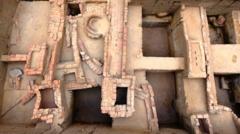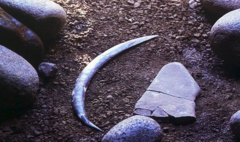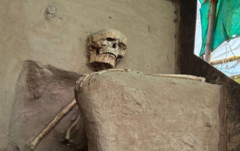Rakhaldas Banerjee, an Indian archaeologist, played a crucial role in the discovery of Mohenjo-daro, a key site of the ancient Indus Valley Civilization. However, his legacy remains entangled in disputes and neglect despite his significant contributions.
The Overlooked Legacy of Rakhaldas Banerjee: Discoverer of Mohenjo-daro

The Overlooked Legacy of Rakhaldas Banerjee: Discoverer of Mohenjo-daro
A groundbreaking Indian archaeologist's contributions to understanding ancient civilizations are often overshadowed by controversy.
Rakhaldas Banerjee, often marginalized in historical discourse, unearthed the ancient city of Mohenjo-daro, which translates to "mound of the dead men," during the early 1900s. Situated in present-day Pakistan, this site was integral to the expansive Indus Valley Civilization, which flourished during the Bronze Age across parts of modern-day India and Afghanistan.
Banerjee, known for his adventurous spirit and expertise in epigraphy, served in the Archaeological Survey of India (ASI) under British colonial rule. His explorations often led him to forgotten corners of the subcontinent, searching for relics and inscriptions. However, his groundbreaking work at Mohenjo-daro faced suppression, with ASI chief John Marshall later attributed the discovery solely to himself. Scholars like archaeologist PK Mishra have criticized this overshadowing of Banerjee’s contributions, likening him to an inconsequential side note in the annals of archaeology.
Banerjee's career, while illustrious, was also mired in controversy. His independent mindset often clashed with institutional norms, leading him into disputes that would permanently stain his reputation. Historian Nayanjot Lahiri pointed out Banerjee's diplomatic shortcomings, citing his unauthorized attempts to procure artifacts from museums, which spurred conflict with superiors.
Despite these tensions, Banerjee's association with Mohenjo-daro has made him a revered figure in the academic circles in Bengal. His passion for history ignited early in life, driving him to join ASI as an excavation assistant and quickly rising through the ranks. It was in 1919 that he encountered the fabled Mohenjo-daro site. His subsequent excavations from 1922 to 1923 yielded critical artifacts, revealing layers of urban settlements and casting light on the impressive expanse of an ancient culture that extended over 386,000 square miles.
However, as he delved deeper into his work, controversies began to overshadow his progress. By 1924, Banerjee faced financial scrutiny, resulting in his transfer away from Mohenjo-daro. Additionally, he grappled with disciplinary issues, compiling unapproved expenses and indulging questions over his spending habits, which ultimately led to his voluntary relocation despite his claims of rebellion against bureaucratic practices.
Banerjee's departure from the ASI in 1927 was tainted by allegations of idol theft from a shrine, which, although ultimately dismissed, forced his resignation under pressure from Marshall. His later years were spent teaching, though they were marked by financial challenges due to his extravagant lifestyle, leading to his premature death at age 45 in 1930.
Rakhaldas Banerjee’s discoveries not only contributed significantly to the field of archaeology but also captured the imagination of historians seeking to better understand India’s ancient civilizations. Unfortunately, his legacy remains overshadowed by the controversies and institutional politics of his time, rendering him a forgotten figure in the story of archaeology.




















